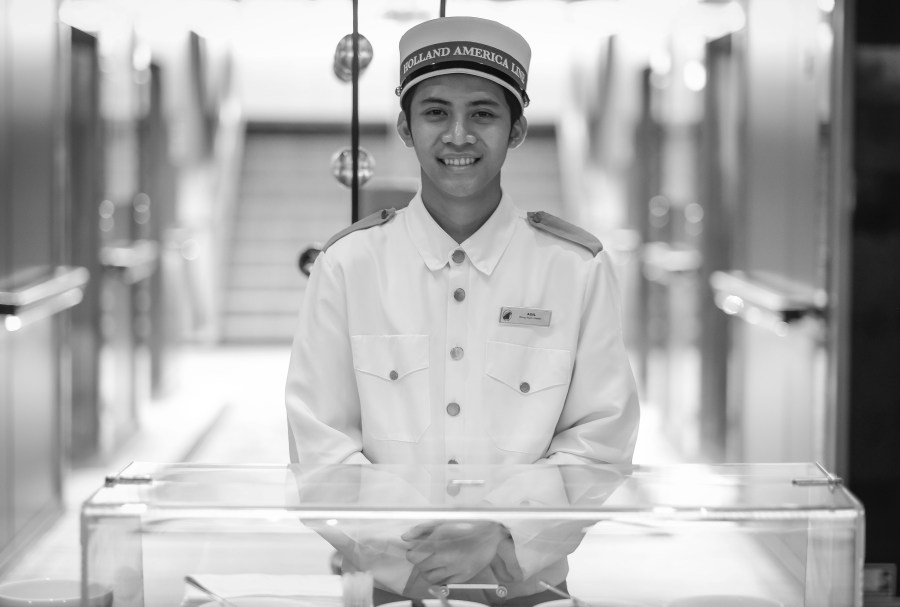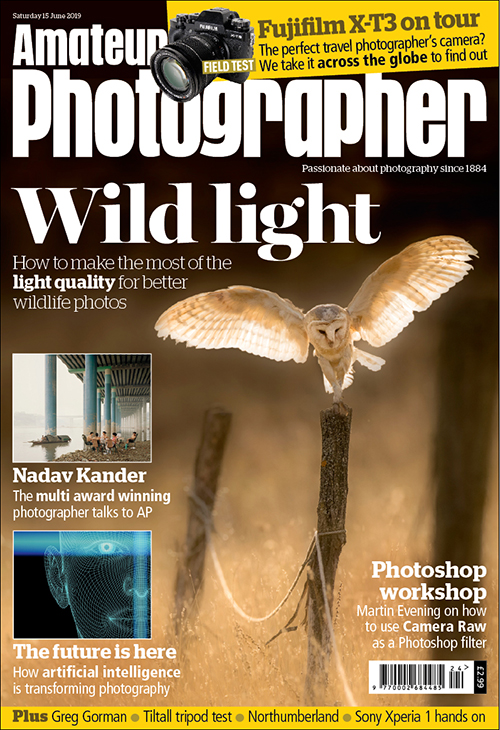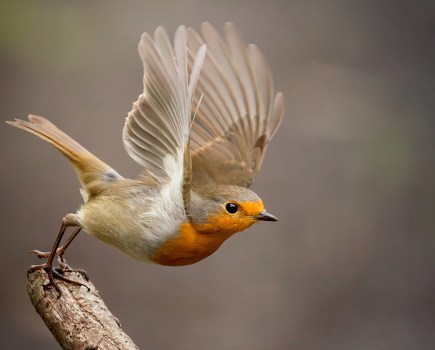I recently spent 17 days sailing around the South Pacific on Holland America Line’s Maasdam. Sailing from Brisbane, Australia, the itinerary comprised a scattering of islands of New Caledonia, Vanuatu and Fiji, before ending in Auckland, New Zealand. I took a Fujifilm X-T3 with a selection of lenses, to find out whether the system offered an ideal compromise between the image quality of full frame and the portability of Micro Four-Thirds.
Beautiful as the port of call were, I found that the most interesting and challenging photographic subject was life on the ship itself. Cruiseships are like swans – beautiful and serene above the surface, but lots of activity down below. The Maasdam has a crew of over 500, from over 25 countries, working round the clock. Some are visible – the deck officers; the waiters; bartenders and room stewards; the entertainment, casino and shop staff; the guest relations and excursions staff; the security staff; and, of course, the ship’s photographers. There are many more who live and work below the waterline – in the engine room, the laundry, the galley. Plumbers, electricians, engineers, carpenters, cooks, tailors, upholsterers, florists and many more whose names and faces remain unknown but without whom the guests’ enjoyment would be diminished and, in some cases, their safety compromised. This is their story.

On the bridge. Fujifilm X-T3, 56mm f/1.2 lens, 1/420sec f/2, ISO 160
Using the X-T3
I chose to shoot in black & white, using Fujifilm’s excellent ACROS Film Simulation mode, which produces a much nicer tonality than the straight monochrome setting. One of the advantages of mirrorless when shooting mono is that you don’t have to just imagine what your scene will look like in black & white, as you do with a DSLR – you see a b&w image in the EVF. Of course I was shooting in raw too so I could just use the ACROS mode as a shooting aid and reprocess my raw files later, using my own profile. But in reality the ACROS mode is so good I didn’t think I could better it myself.
I shot mostly in aperture priority or manual exposure mode, using auto ISO. It meant I could set the aperture and shutter combination I wanted, and let the camera take care of the exposure by adjusting the ISO, and with mirrorless cameras you can see in the viewfinder if the camera gets it wrong. The X-T3 never did. The images are so good even at ISO 6400 that I never had to worry about obtrusive noise. In ACROS mode noise resembles film grain and looks pleasing.

Arriving in Noumea, New Caledonia. Fujifilm X-T3, XF55-200mmF3.5-4.8 R LM OIS: 1/500sec f/5.6, ISO 160
The fast primes that I took really came into their own in the ship’s low light. The X-T3 lacks in-body stabilisation and none of my primes had OIS, so I tried to keep the shutter speed above 1/60sec, where possible, to reduce the risk of blur both from camera shake and subject movement, which meant I found myself shooting at wide apertures a lot of the time. One third of the black and white pictures were taken at f/2 or wider, and another third were shot at ISO 6400 or higher. The resulting shallow depth of field helped separate the subjects from busy backgrounds – even when using the 16mm lens, which surprised me.
The camera’s tilting touchscreen enabled me, when necessary, to shoot unobserved, from waist level, and select the focus point by tapping on it, and to make sense of a busy scene by holding the camera above my head with the screen tilted down. Generally the ambient noise ensured that the quiet shutter could not be heard, but on a couple of occasions I found the ability to switch to a completely silent electronic shutter very useful.

Washing the ship. Fujifilm X-T3, XF16mmF1.4 R WR; 1/300sec f/5 ISO 160
Overall the X-T3 is, to me, almost the perfect travel photographer’s camera. Its only downside, for me, is the lack of stabilisation, either in the body or my favourite lenses. Although it wasn’t a big issue on this project there were times that it would have been useful. It’s the one thing I’d like to see added to a future X-T4 – though not if it makes the body bigger. Maybe I’m asking too much, but if Sony can do it…
As for the lenses, the fast primes are just superb, and compared to their full frame counterparts they’re very small. But if you’re really counting every gram the f/2 versions are much smaller still. With a gun to my head and forced to choose just three of them, I’d probably go for the 16mm f/1.4 and 56mm f/1.2 primes, plus the 18-55mm f/2.8-4 for when circumstances call for a zoom. I loved shooting portraits at wide-apertures with the 56mm f/1.2 and the quality is fantastic. About 35% of the pictures in my favourites folder were taken with it. I like the combination of in-your-face perspective and shallow depth of field that you can get from shooting wide open at close range with the 16mm f/1.4 lens. The 18-55mm f/2.8-4 is a great walkabout lens. I didn’t feel like I was compromising much in quality with this lens, despite its modest size, and I gained a lot in convenience.
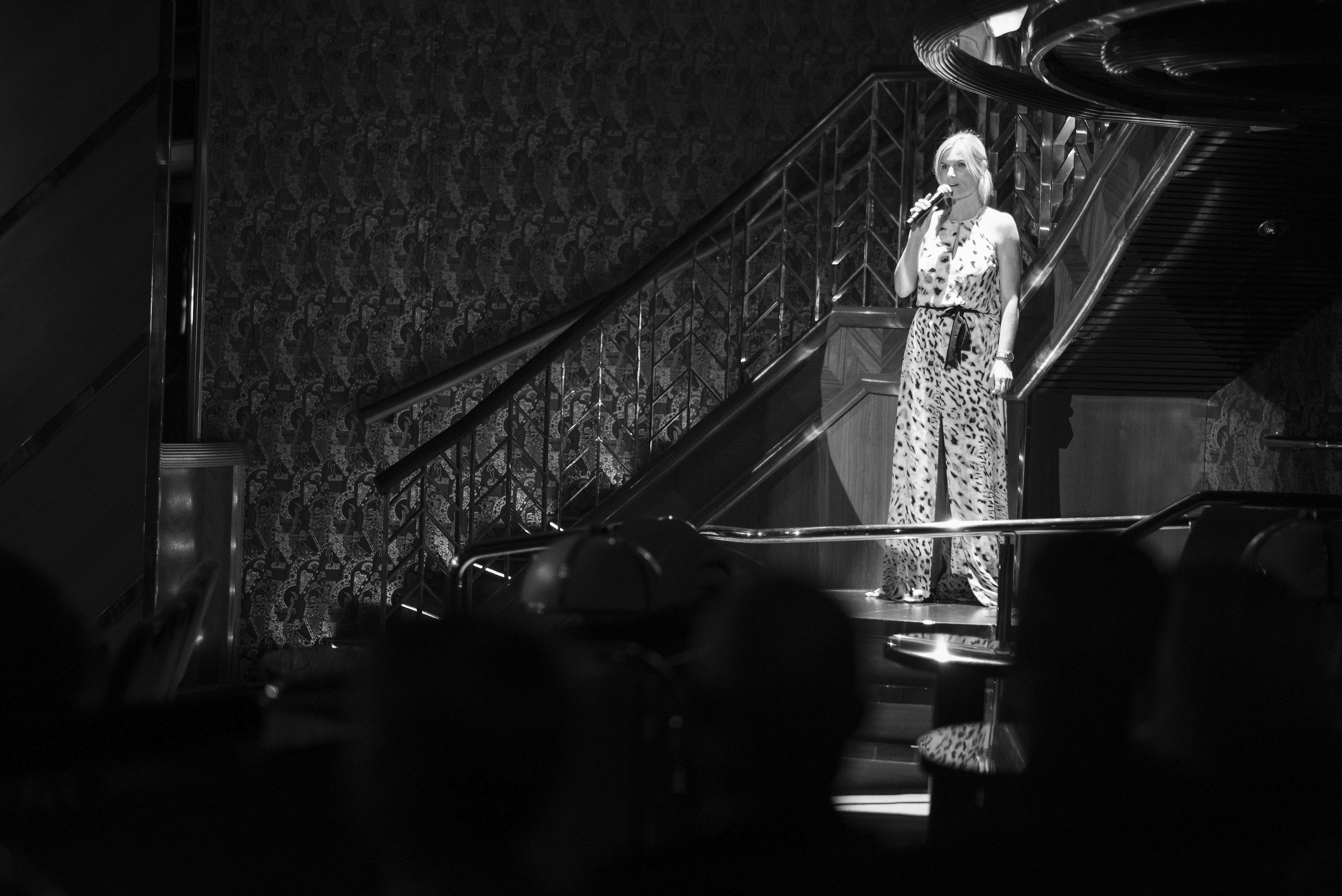
The Cruise Director, spotlit in a darkened theatre. Fujifilm X-T3, 56mm, 1/80sec f/1.2, ISO 1000

The AV technician at work during a show. Shot at ISO 6400 but the noise is not obtrusive. Fujifilm X-T3, XF56mm F1.2 R, 1/60sec f/2.2, ISO 6400
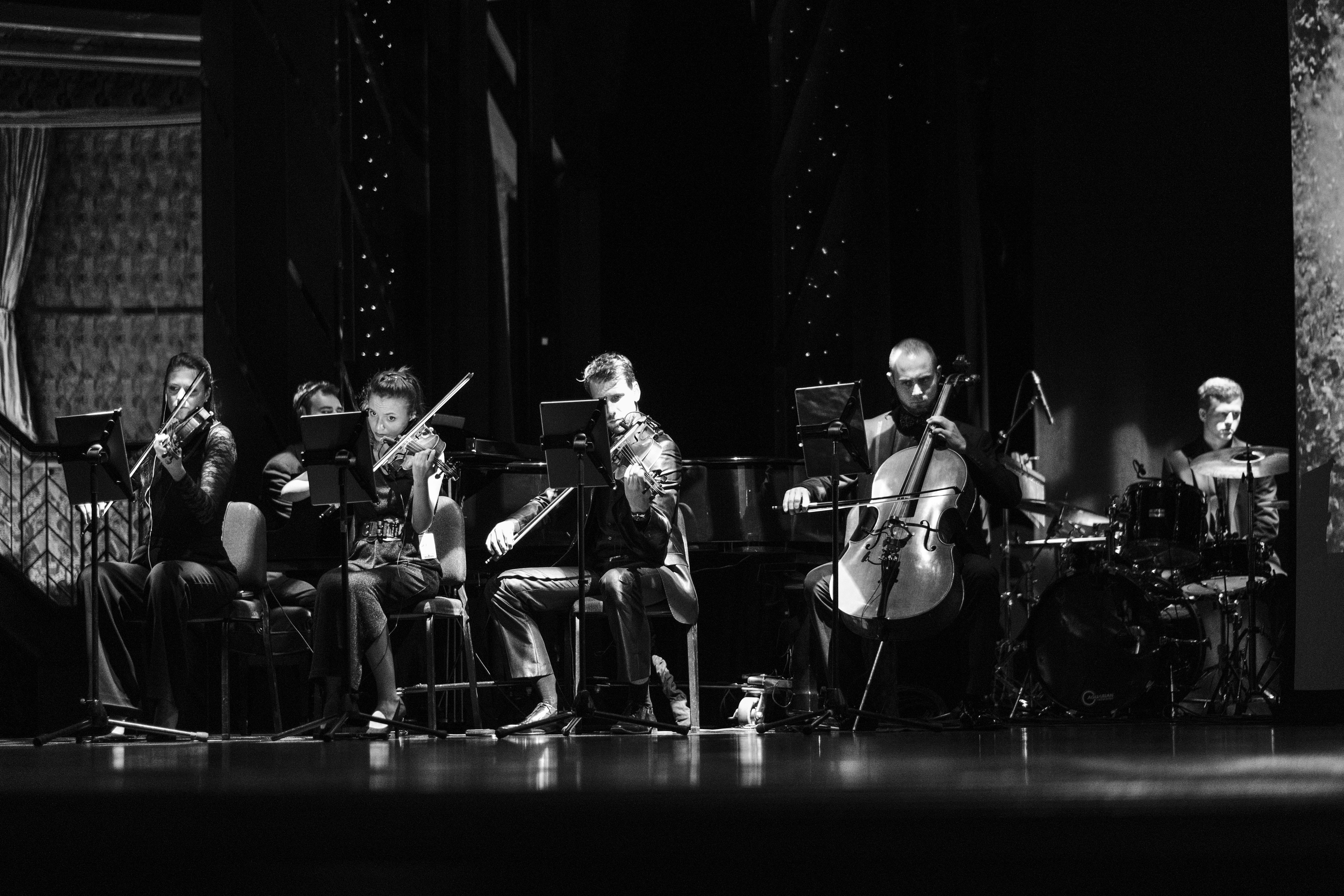
The orchestra, performing the score to the BBC’s Frozen Planet as the visuals are displayed on the big screen. Fujifilm X-T3, XF56mm F1.2 R. 1/80sec f/1.2, ISO 2500
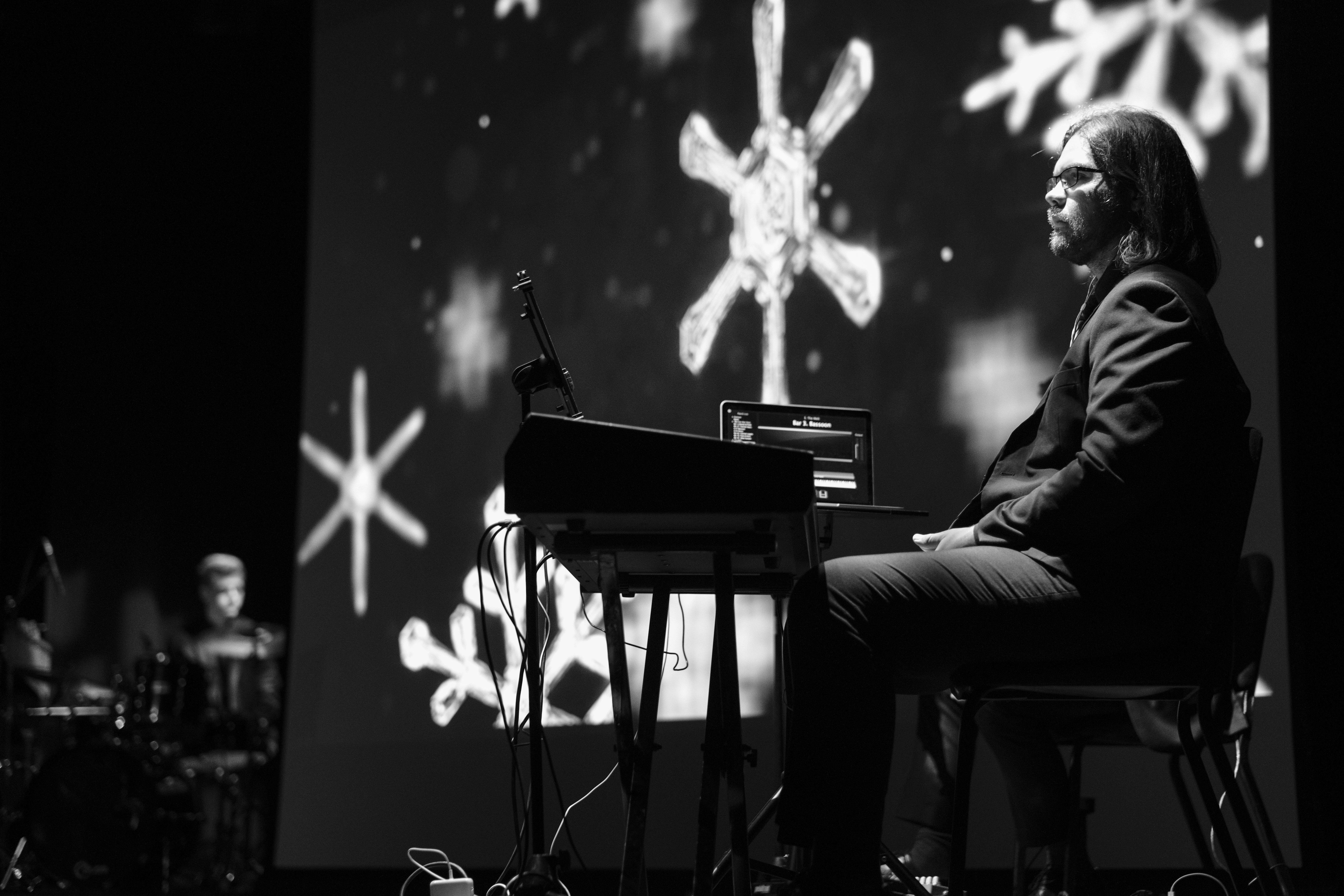
Musician, during a performance. Fujifilm X-T3, XF56mm F1.2 R, 1/80sec f/1.8, ISO 1600
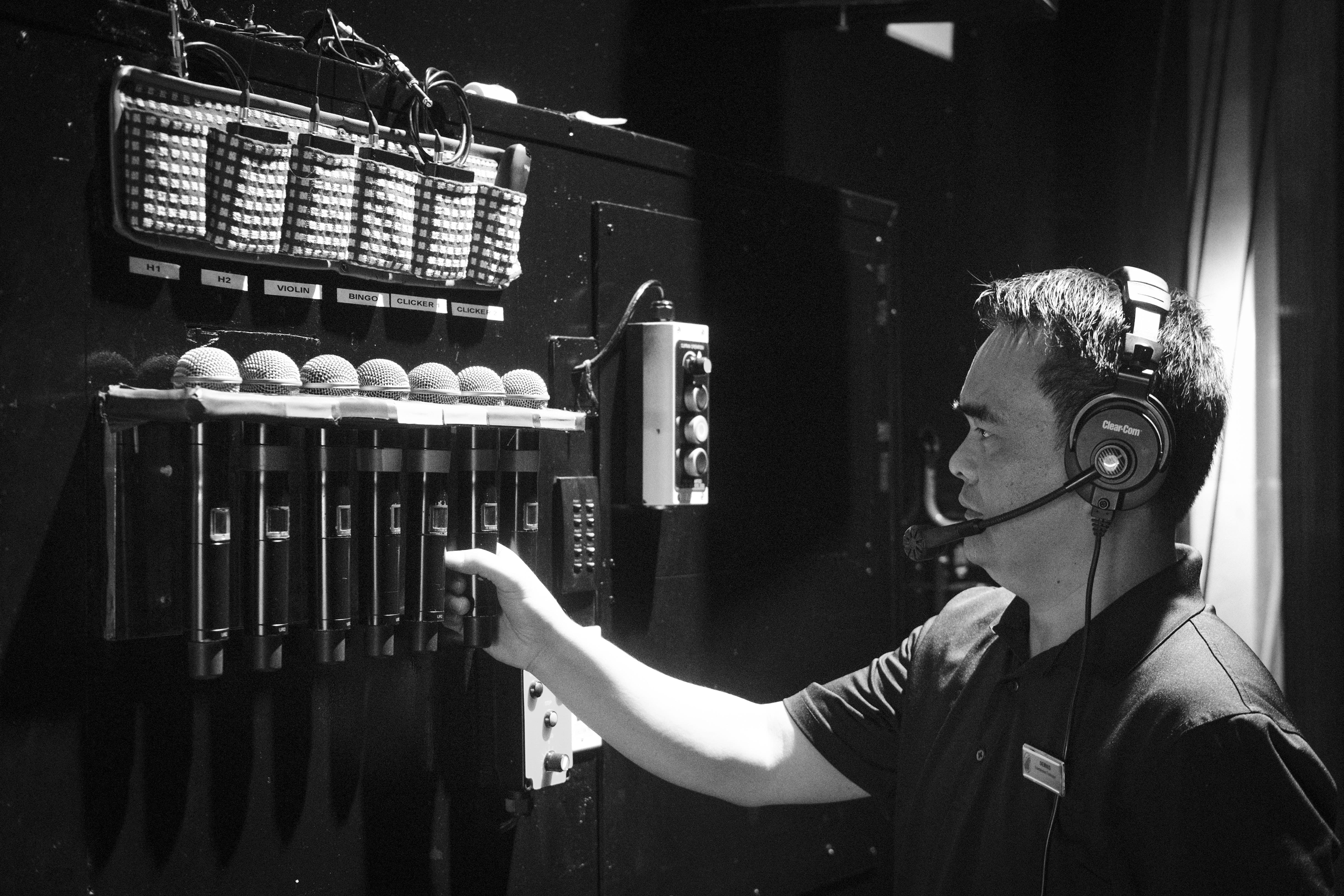
Shot backstage in near darkness at ISO 6400. Fujifilm X-T3, XF35mm F2 R WR, 1/60sec f/2.8, ISO 6400
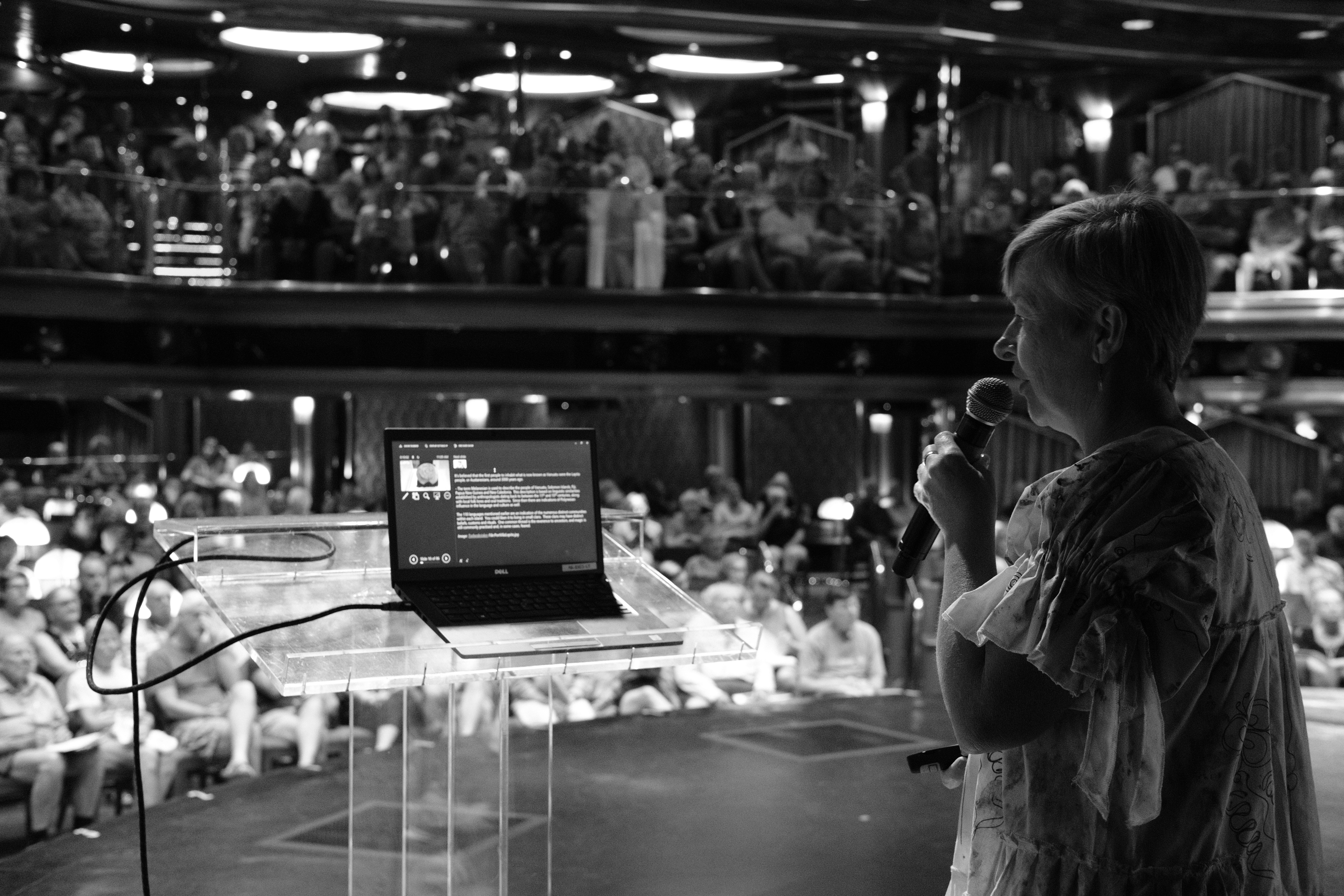
View from the stage during a port orientation talk. Fujifilm X-T3, XF35mm F2 R WR, 1/50sec f/4, ISO 5000

Bartender, shot wide open on the 56mm. Fujifilm X-T3, XF56mmF1.2 R, 1/60sec f/1.2, ISO 2000
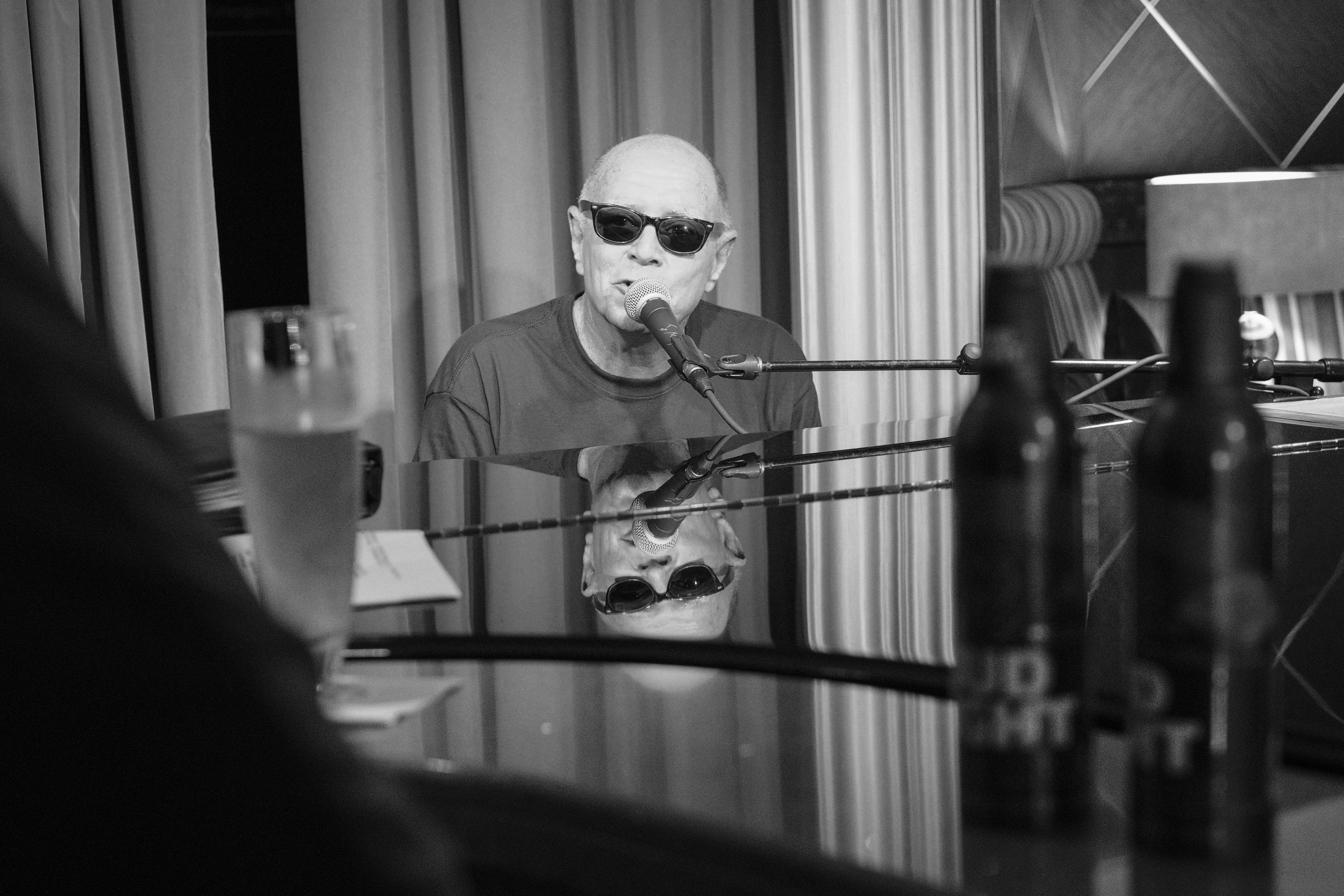
Don’t shoot the piano player. Fujifilm X-T3, XF35mm F2 R WR, 1/50sec f/2.8, ISO 5000
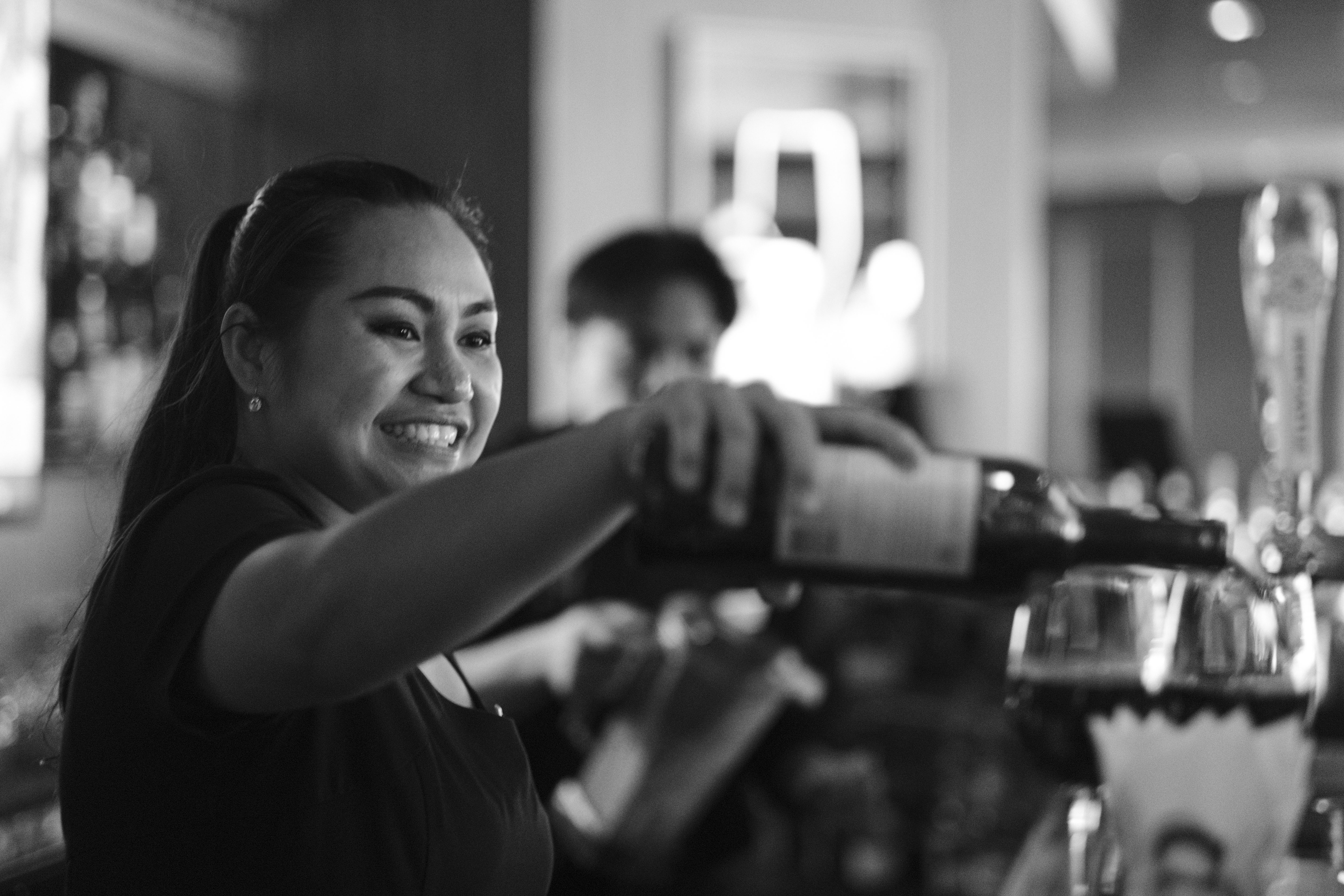
Bartender. Fuifilm X-T3, XF56mmF1.2 R, 1/60sec f/1.4, ISO 1600
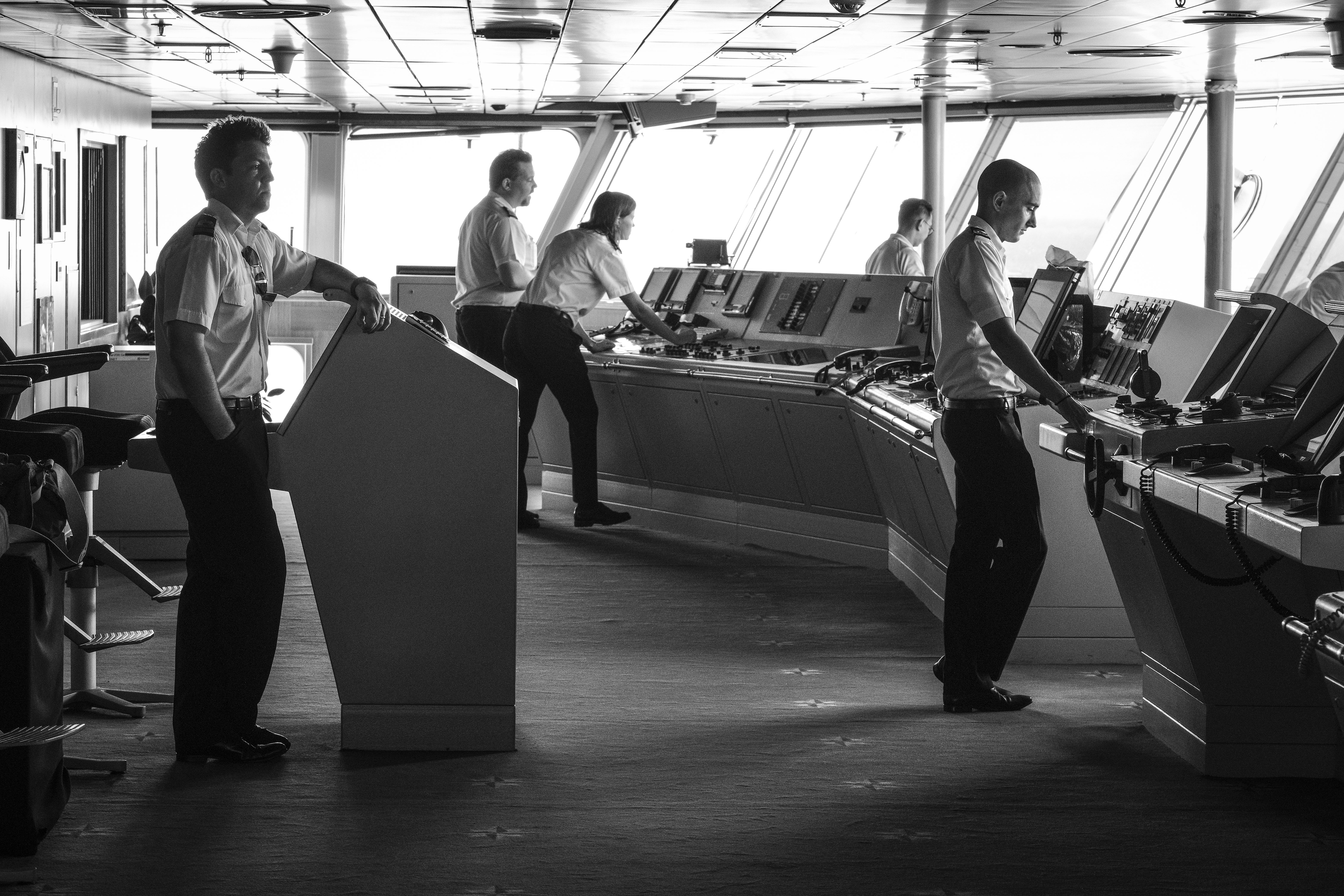
On the bridge. Fuifilm X-T3, XF55-200mm F3.5-4.8 R LM OIS, 1/110sec f/8, ISO 12500
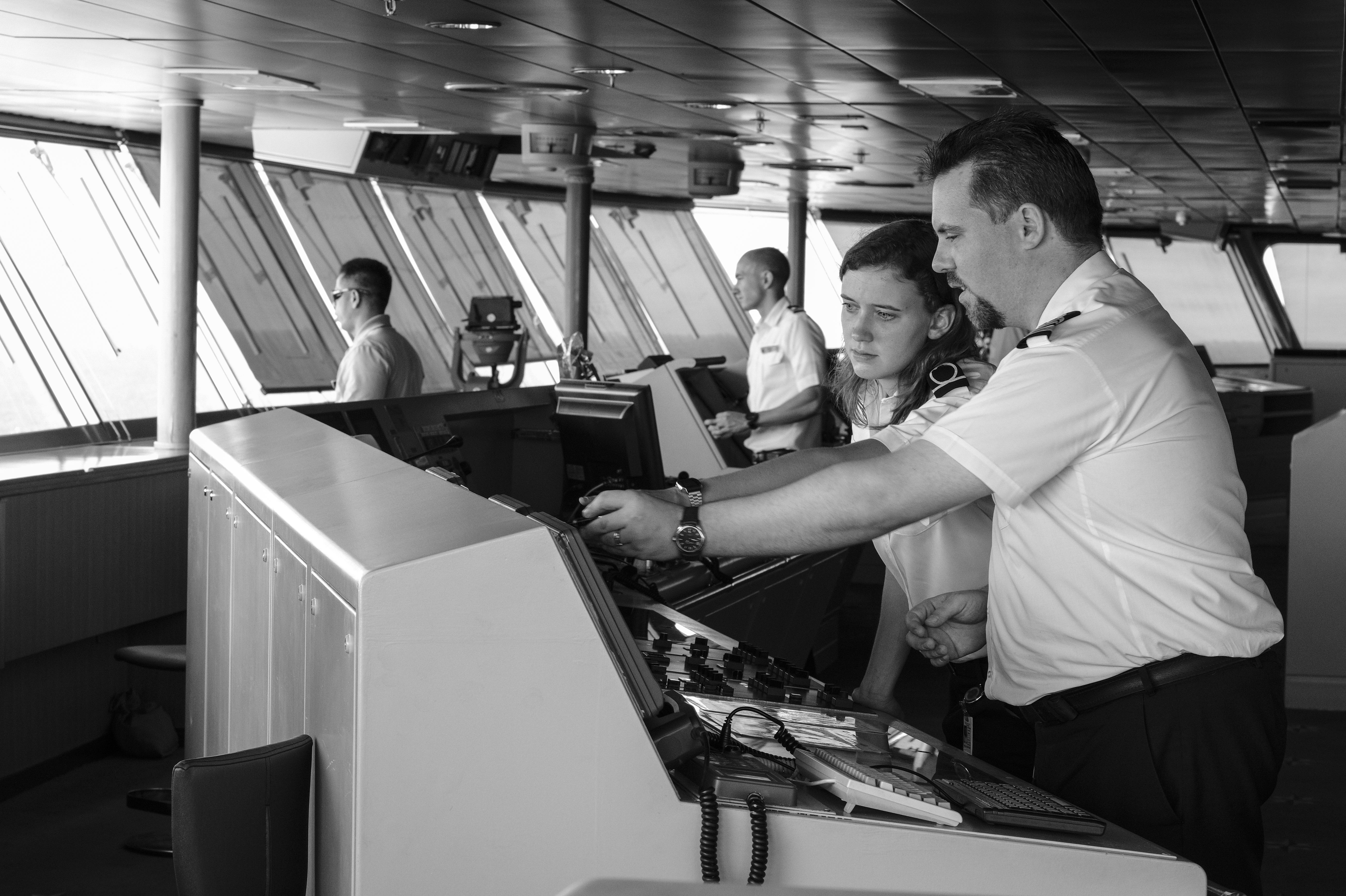
On the bridge. Fuifilm X-T3, XF55-200mm F3.5-4.8 R LM OIS, 1/80sec f/8, ISO 800
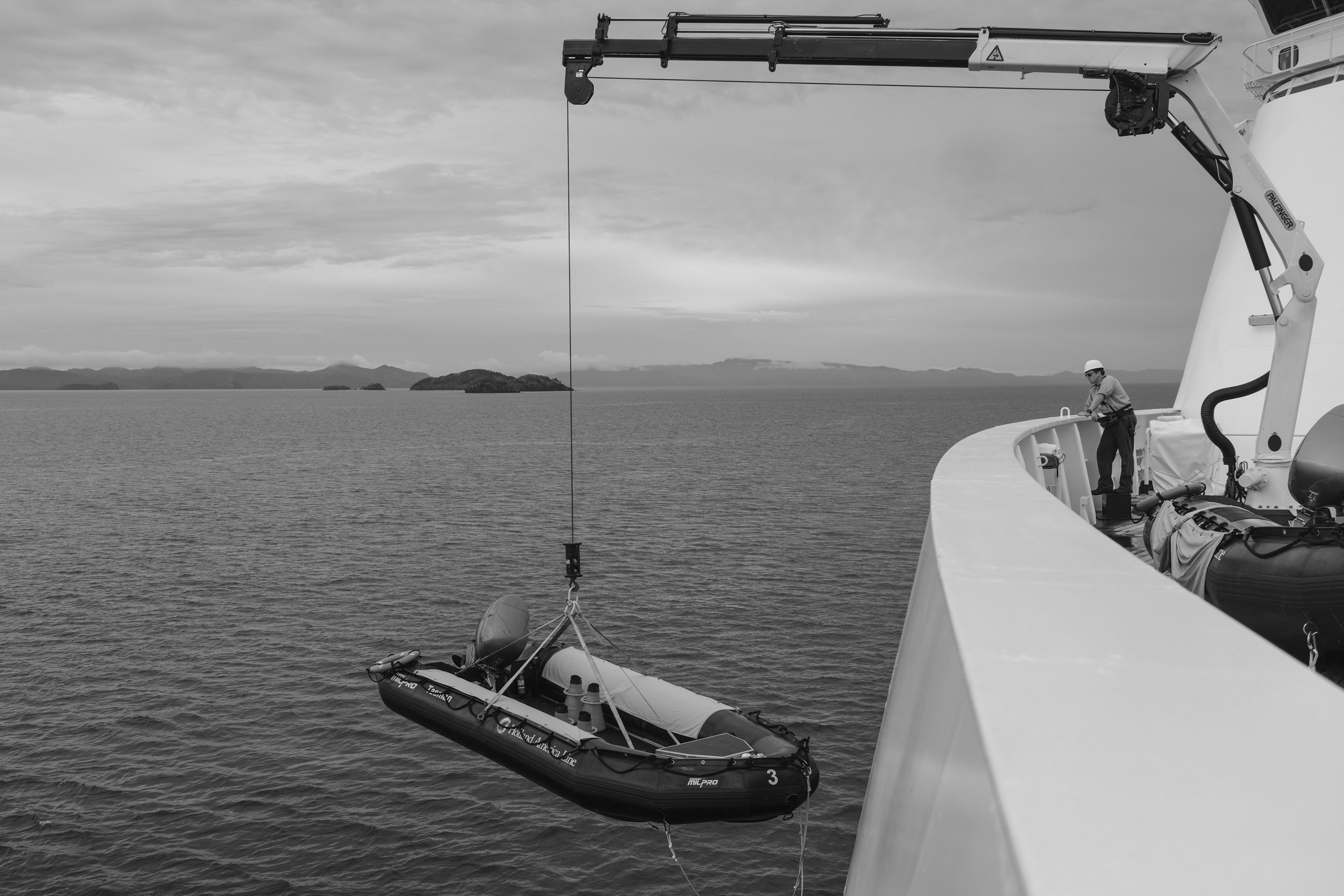
One of the Maasdam’s unique attractions is its fleet of zodiacs, which in selected ports take guests to more remote places not accessible by larger vessels. Fujifilm X-T3, XF18-55mmF2.8-4 R LM OIS, 1/450sec f/5.6, ISO 160
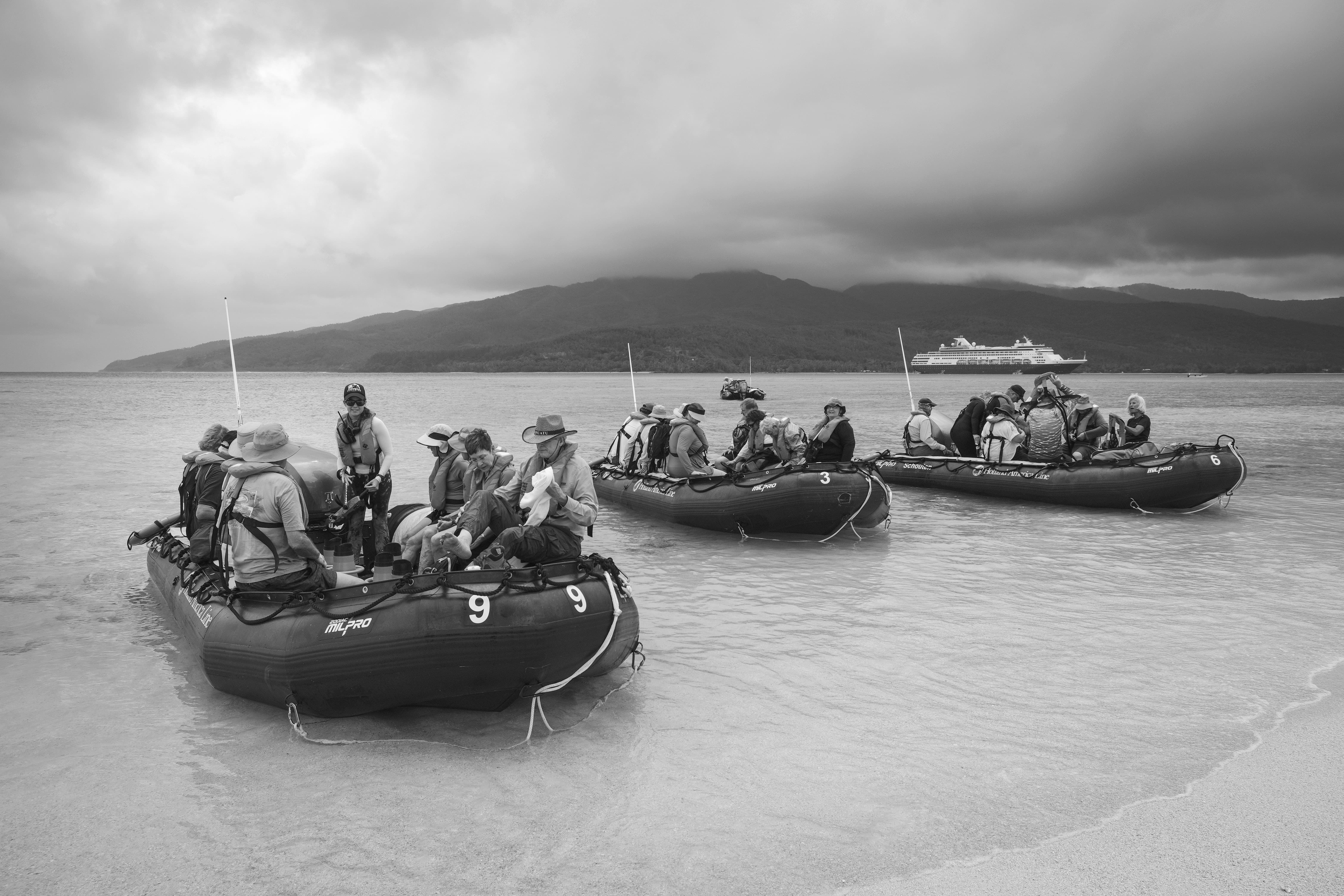
The Maasdam’s fleet of Zodiacs arrive at Mystery Island, Vanuatu.
Fujifilm X-T3, XF18-55mmF2.8-4 R LM OIS at 18mm, 1/800sec f/5.6, ISO 160
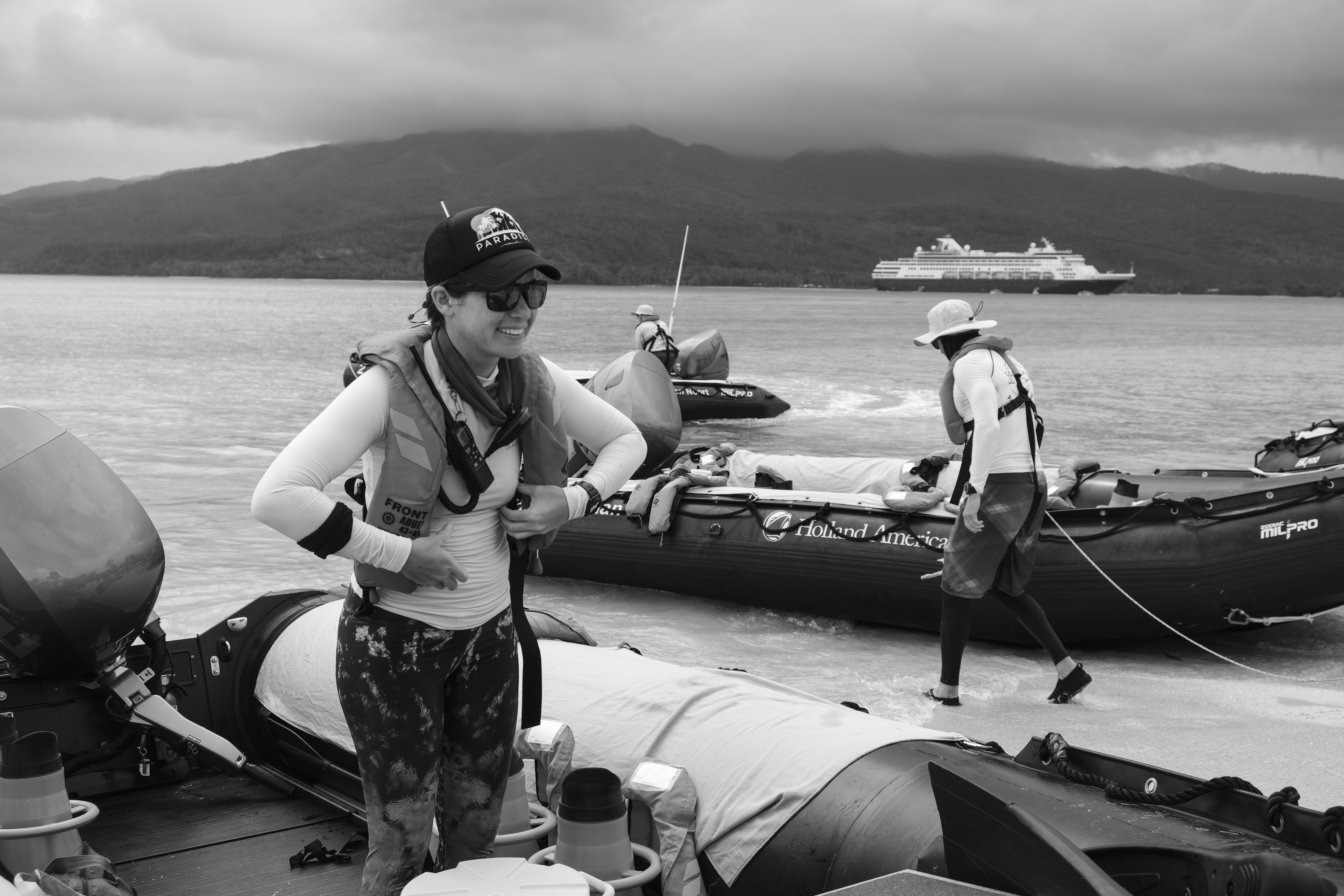
Zodiac pilots prepare for departure from Mystery Island, Vanuatu.
Fujifilm X-T3, XF18-55mmF2.8-4 R LM OIS at 18mm, 1/680sec f/5.6, ISO 160

Crew lifeboat drill: Fujifilm X-T3, XF55-200mm F3.5-4.8 R LM OIS at 200mm, 1/300sec f/8, ISO 800

Maintaining a ship the size of the Maasdam is a full-time job. Fujifilm X-T3, XF55-200mm F3.5-4.8 R LM OIS, 1/250sec f/8, ISO 160
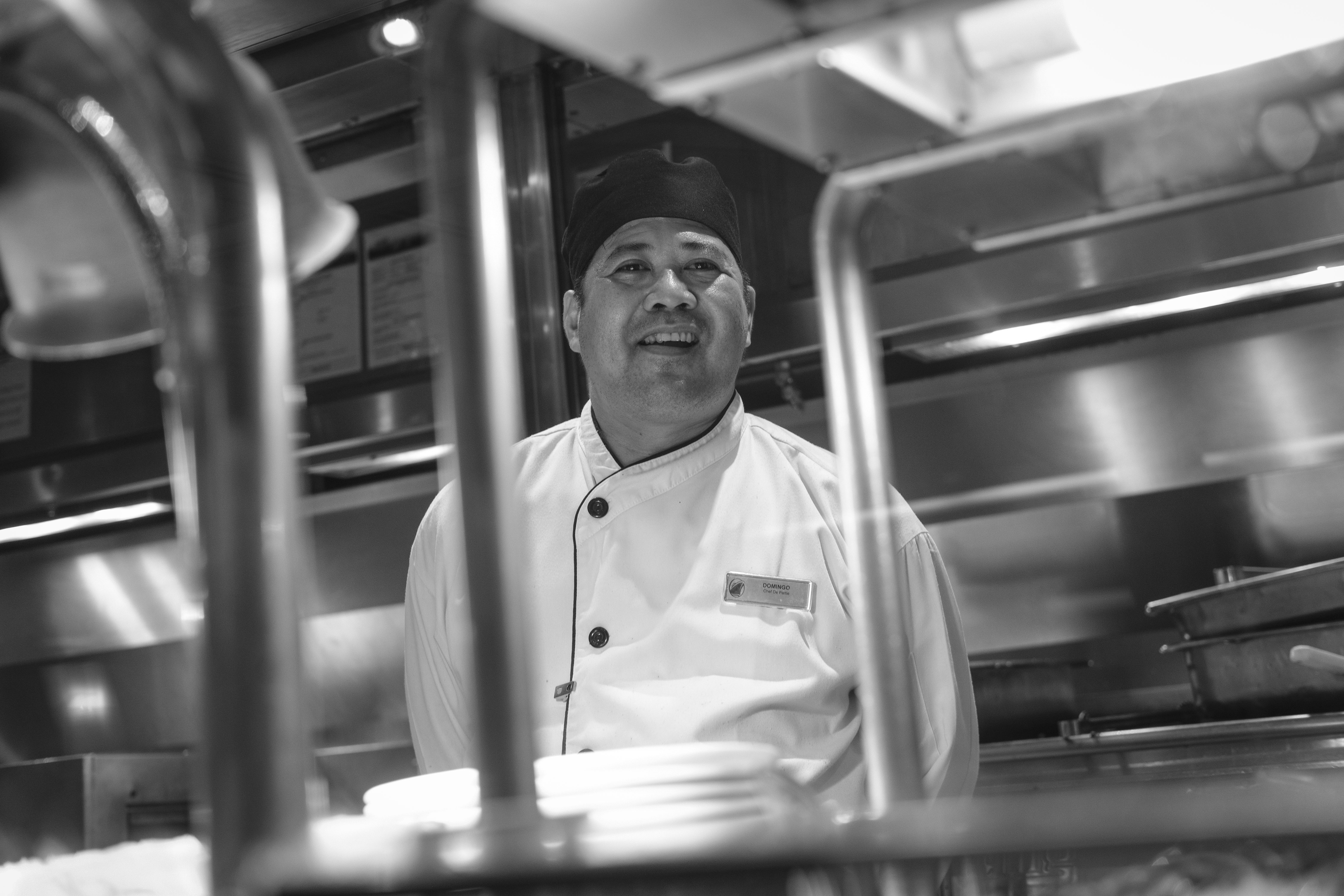
Lido chef. Fujifilm X-T3, XF16mm F1.4 R WR, 1/60sec f/1.4, ISO 3200
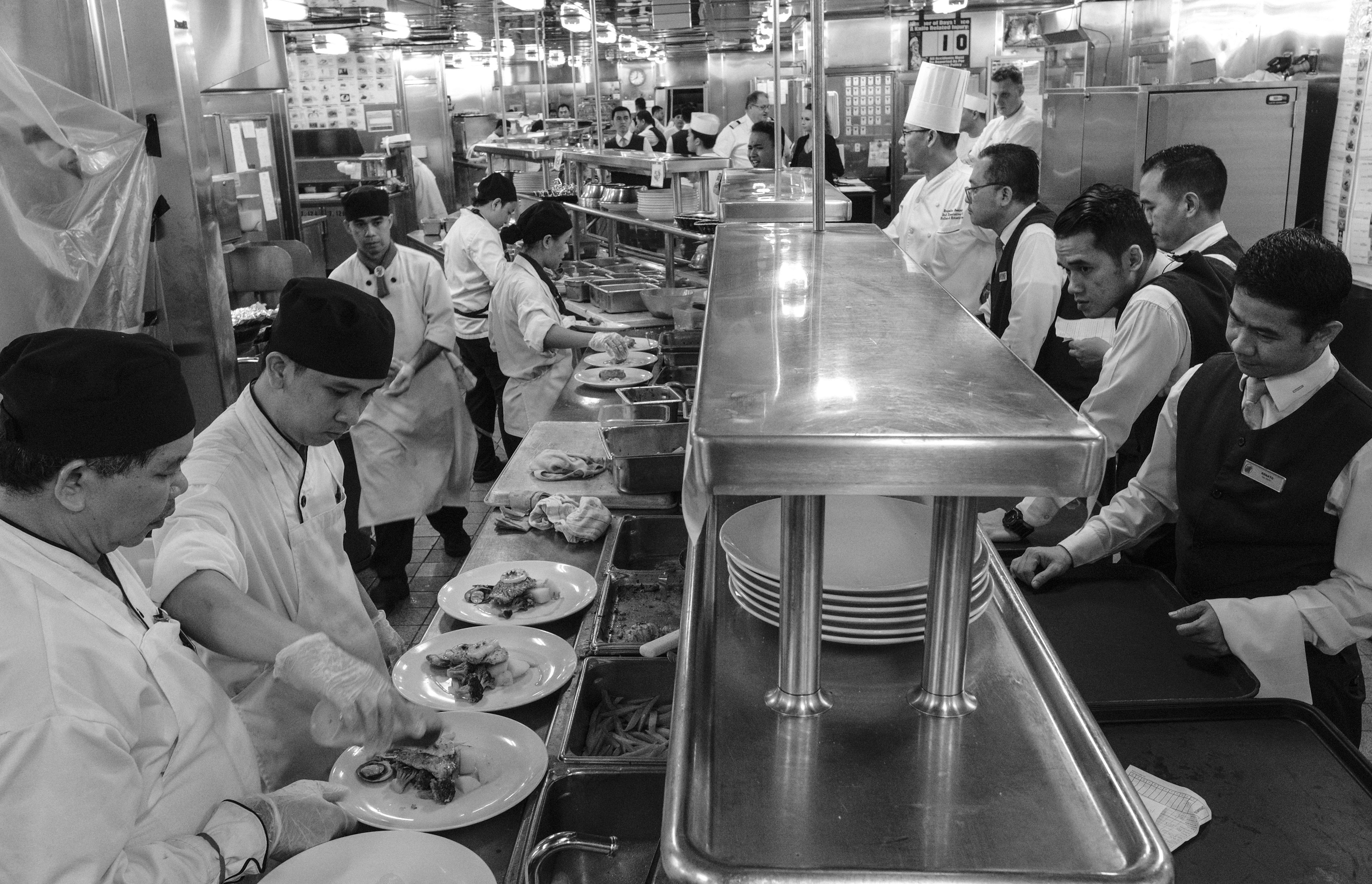
The ship’s galley: Fujifilm X-T3, XF16mm F1.4 R WR, 1/60se f/5.6, ISO 2500
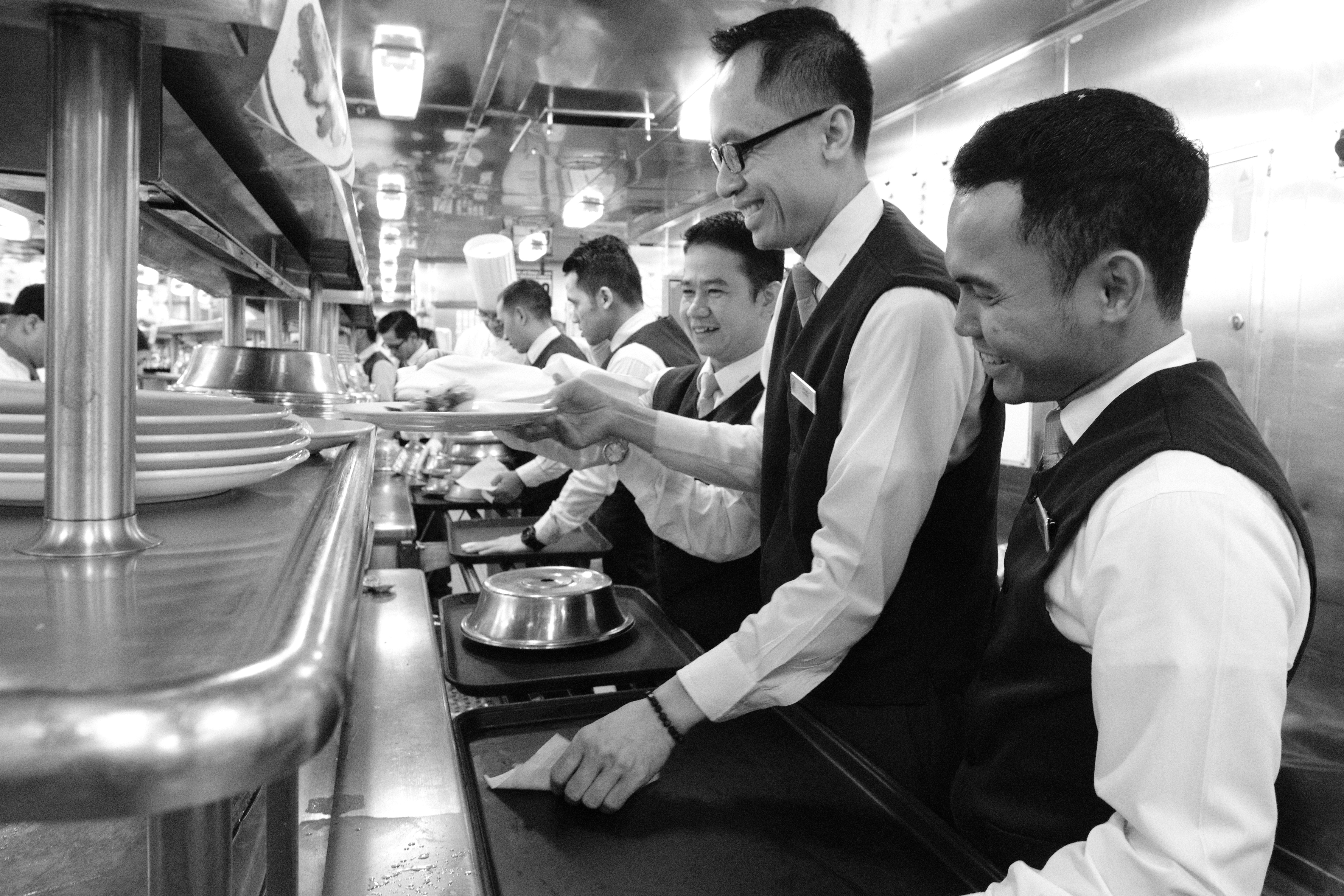
In the galley at ISO 6400. Fujifilm X-T3, XF16mm F1.4 R WR, 1/60sec f/5.6, ISO 6400
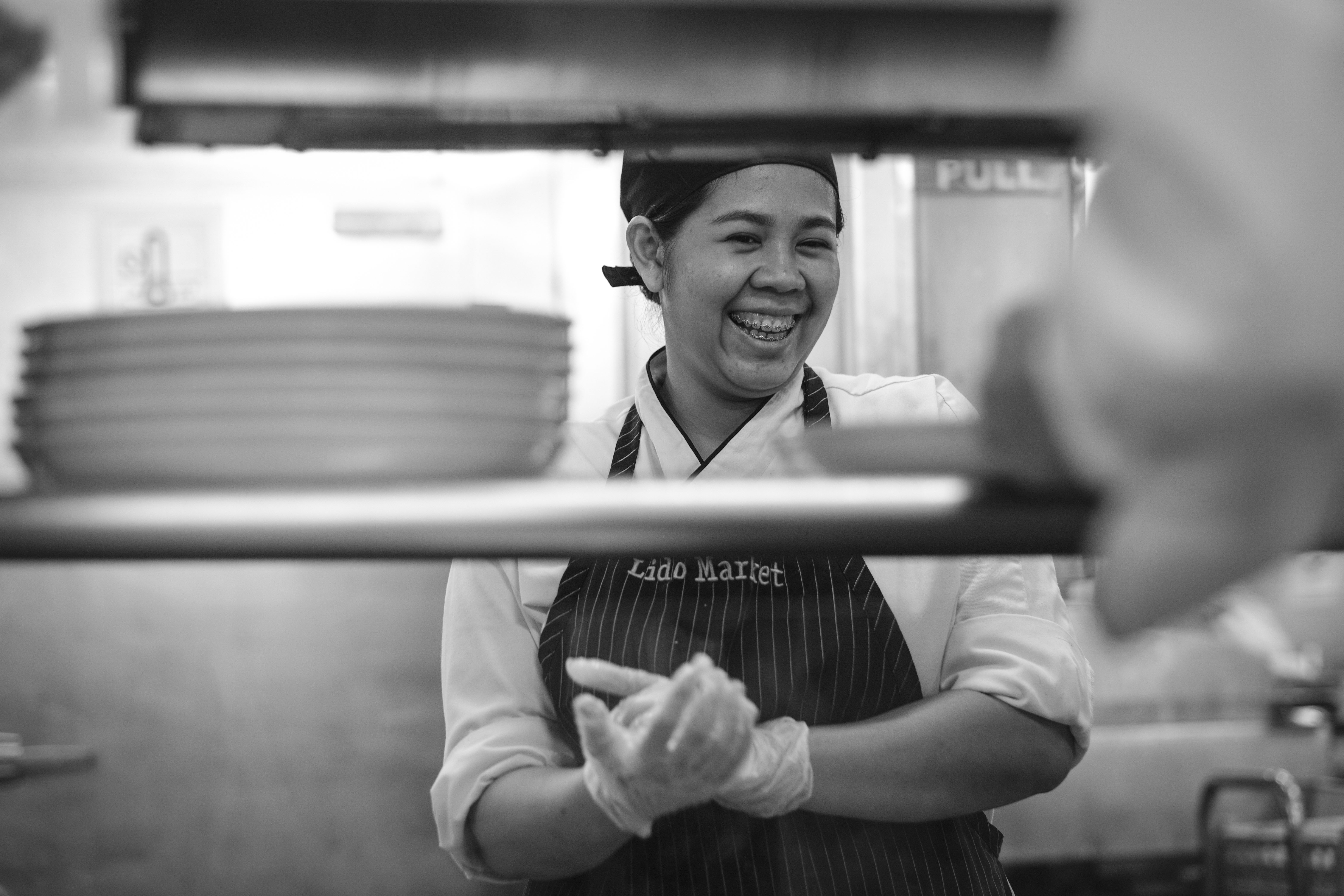
The ship’s galley: Fujifilm X-T3, XF56mm F1.2 R, 1/125sec f/2, ISO 800
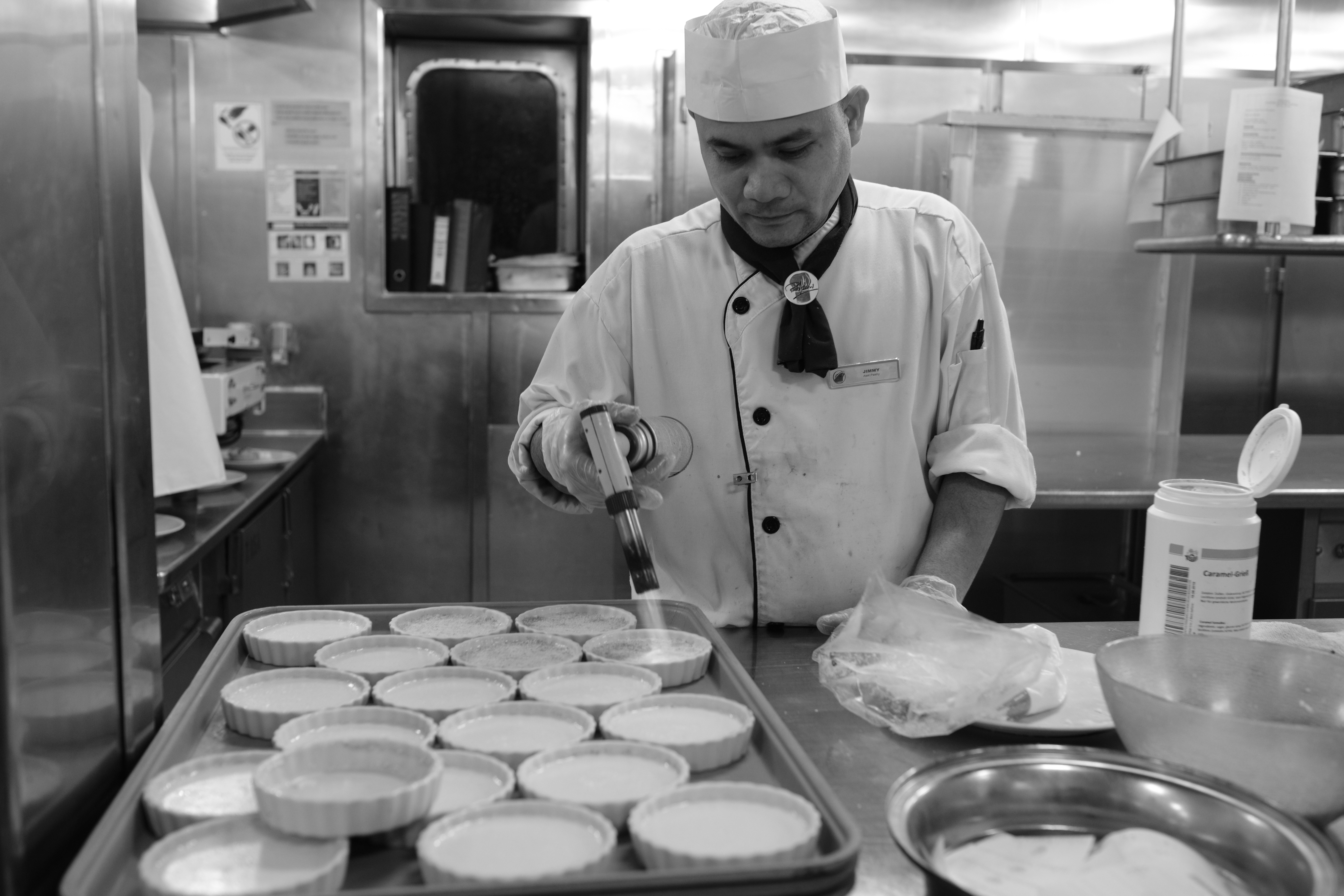
Blow-torching the creme brulees. Fujifilm X-T3, XF23mm F1.4 R, 1/30sec f/2.8, ISO 6400
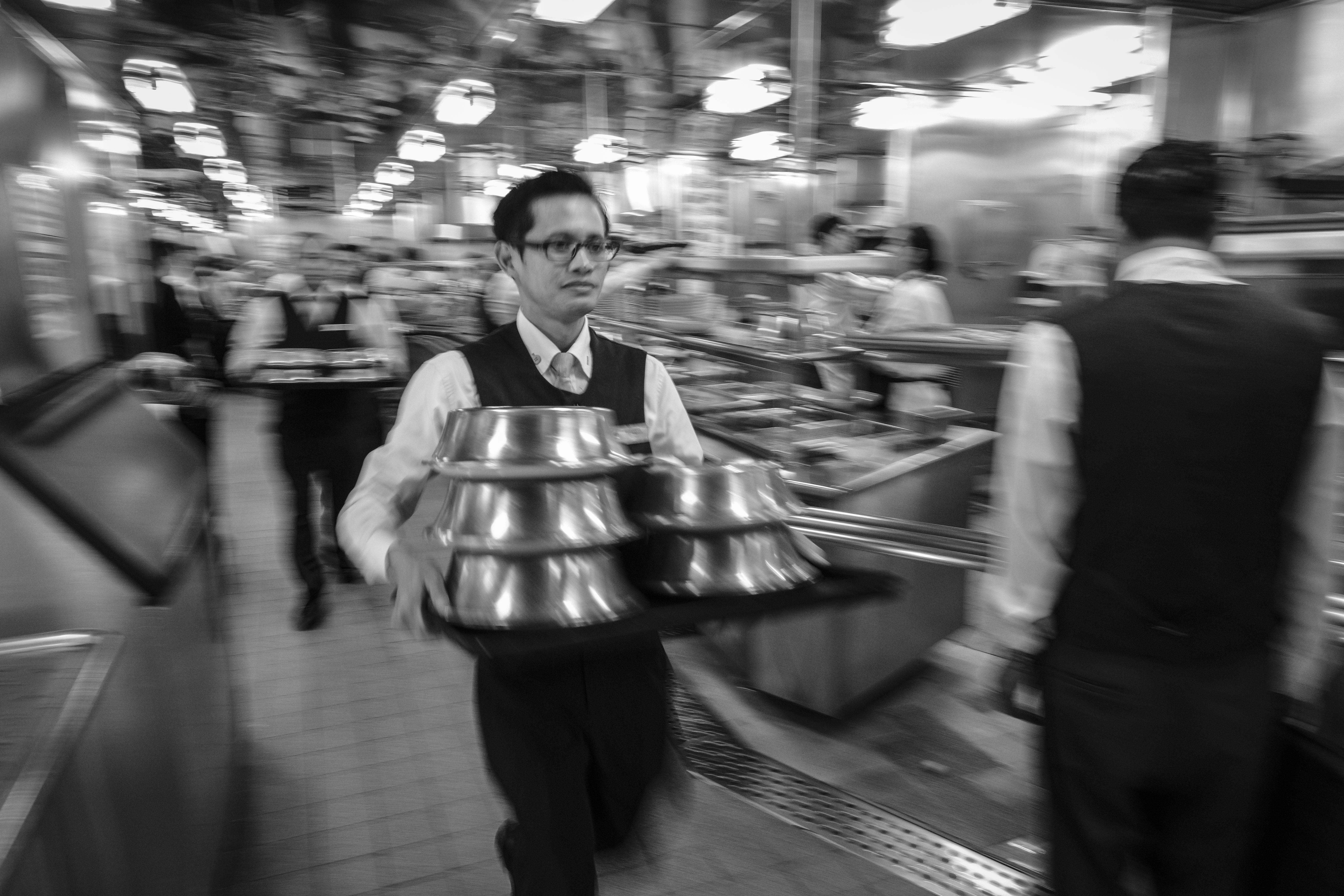
A slow shutter speed was used to capture the bustle of the galley Fujifilm X-T3, 16mm f/1.4, 1/15sec f/5.6, ISO 800
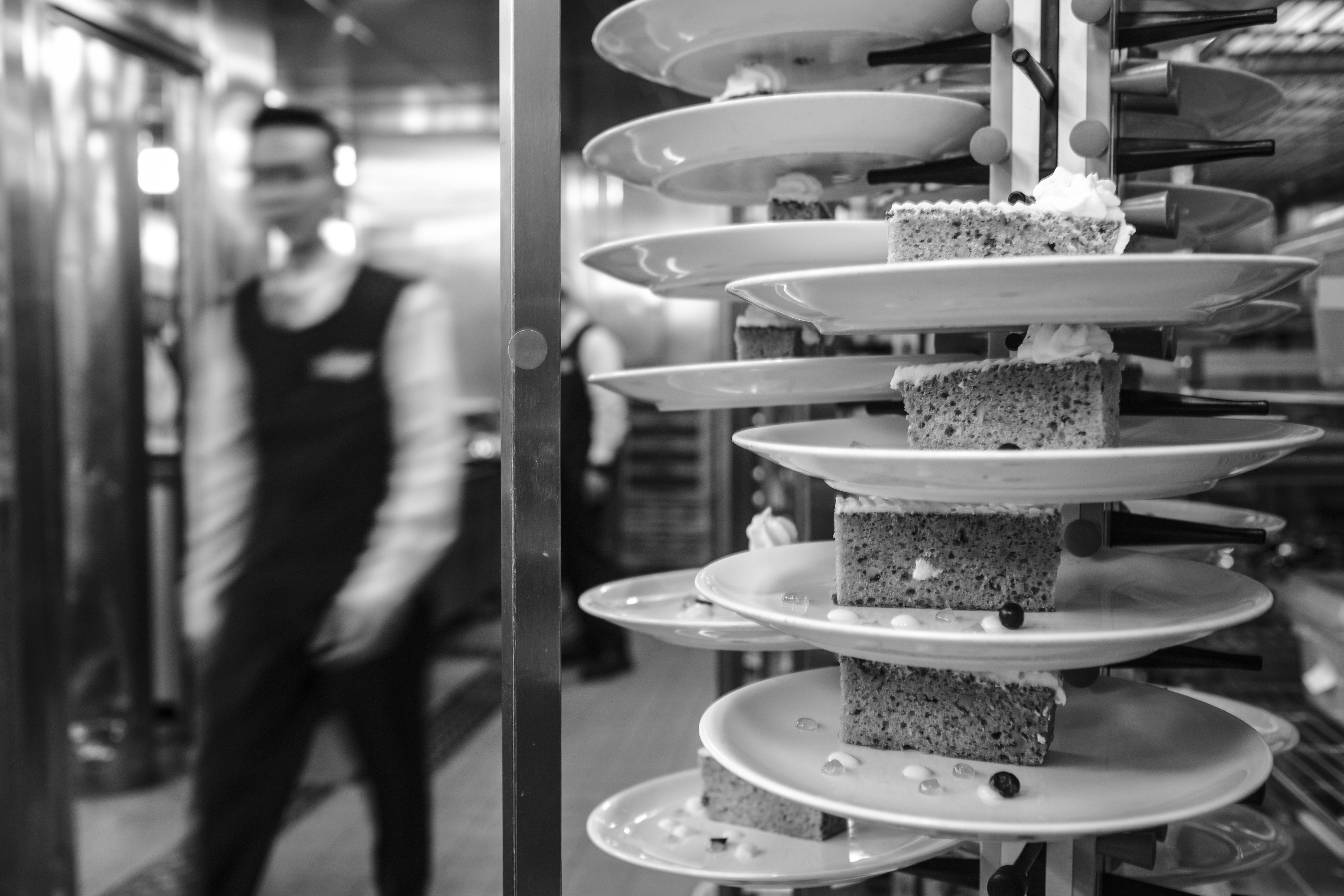
Dessert. Fujifilm X-T3, XF23mm F1.4 R, 1/15sec f/2.8, ISO 240

Waiters in the restaurant. Fujifilm X-T3, XF16mm F1.4 R WR, 1/60sec f/1.4, ISO 3200

Time for dessert, Fujifilm X-T3, XF23mmF1.4 R, 1/30sec f/2.8, ISO 400
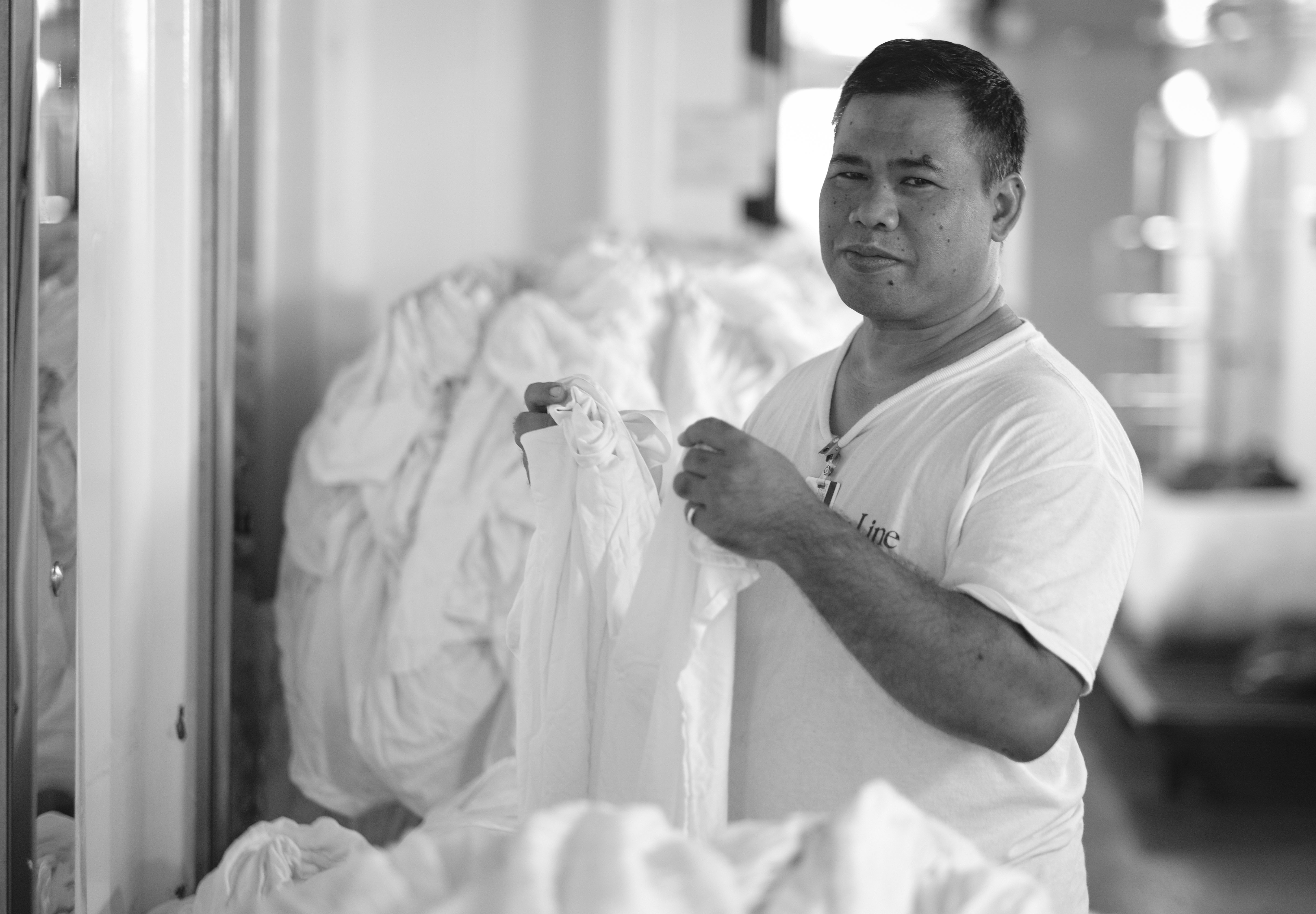
The ship’s laundry. Fujifilm X-T3, XF56mm F1.2 R. 1/80sec f/1.4, ISO 800
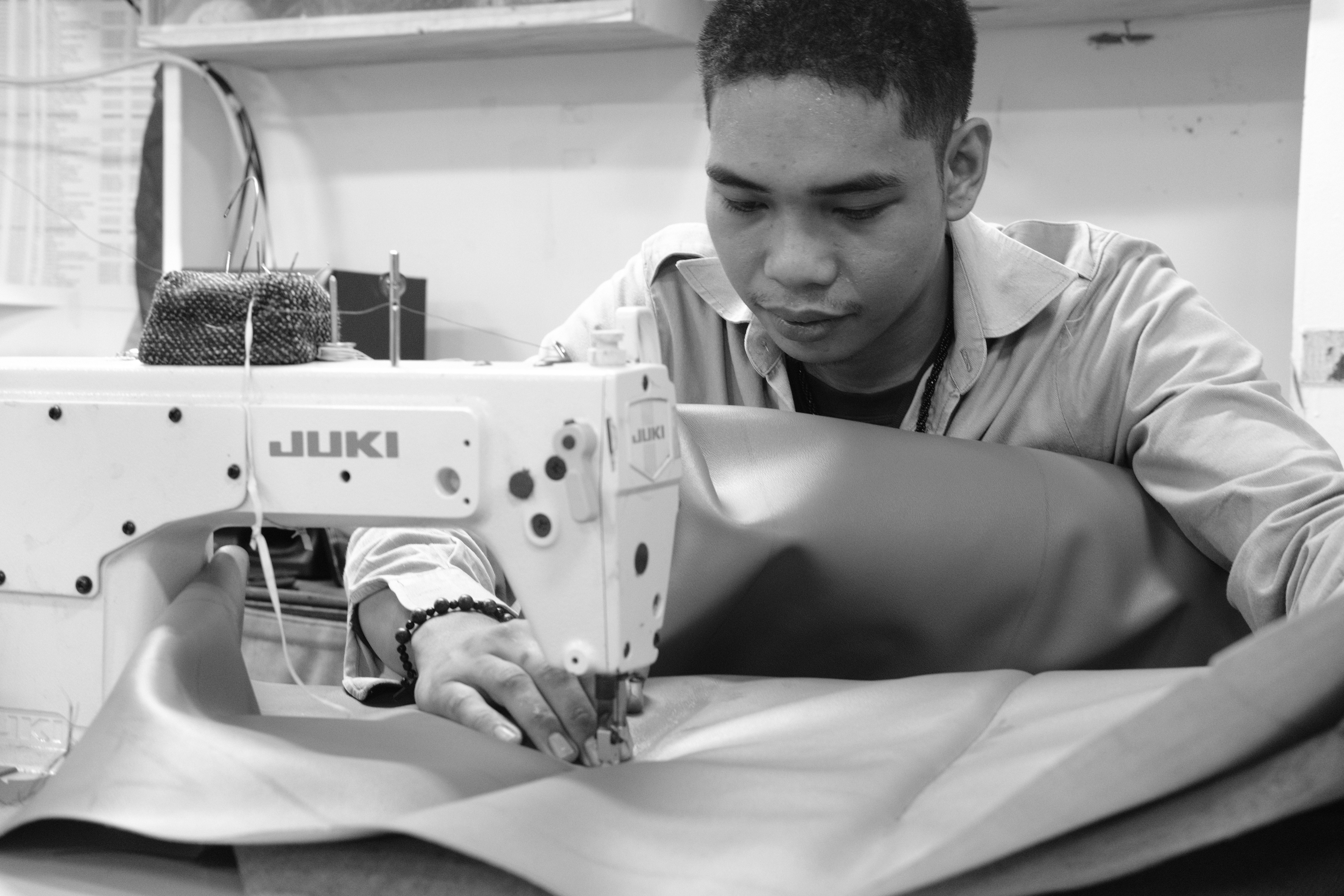
Upholsterer at work. Fujifilm X-T3, XF35mm F2 R WR, 1/50sec f/4.5, ISO 2500
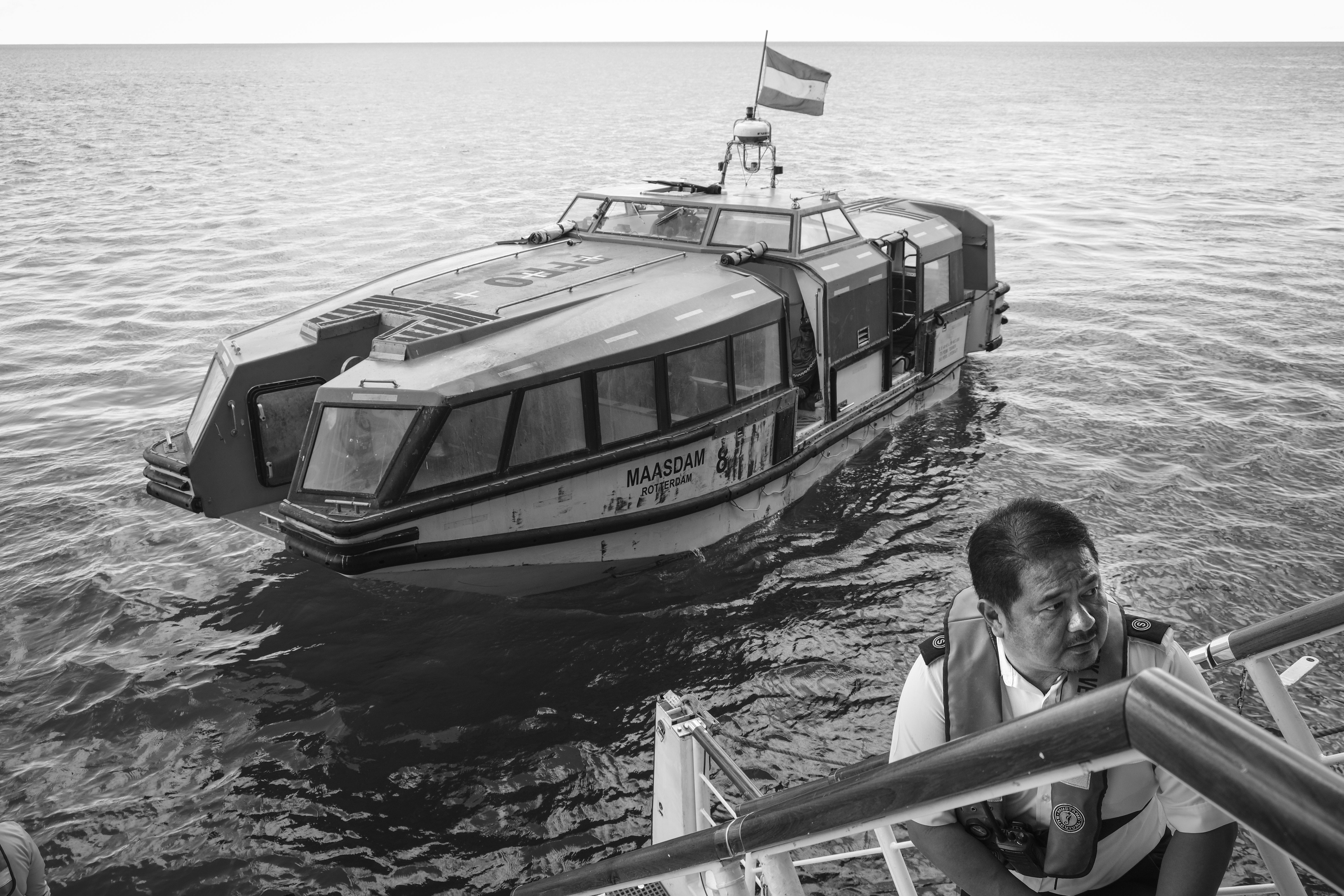
Preparing the tenders, with the ship at anchor. Fujifilm X-T3, XF18-55mm F2.8-4 R LM OIS, 1/40sec f/5.0, ISO 160

Driving the tender, taking guests ashore.Fujifilm X-T3, XF18-55mm F2.8-4 R LM OIS, 1/120sec f/5.6, ISO 160

Helping guests out of the tender at Tadine. Fujifilm X-T3, XF18-55mm F2.8-4 R LM OIS, 1/1000 f/5.6, ISO 160
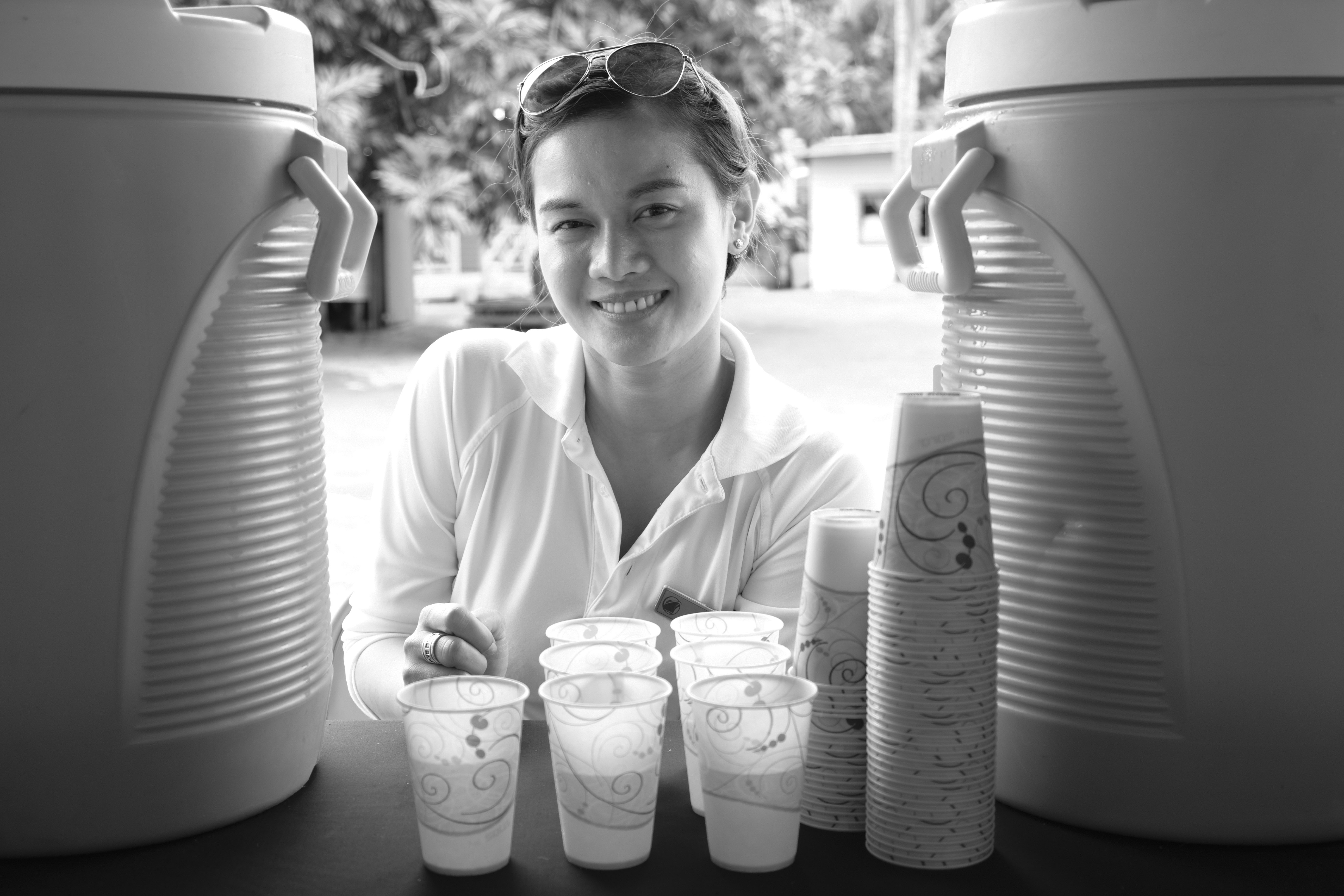
Refreshments on the quayside. Fujifilm X-T3, XF18-55mm F2.8-4 R LM OIS, 1/45sec f/4.5, ISO 200
A more detailed feature about this cruise, and the Fujifilm X-T3 , appears in the 15th June issue of Amateur Photographer magazine, on sale 11th June 2019.
About the Maasdam
The Maasdam is one of the smallest ships in the Holland America Line fleet, cruising mainly in Asia and the Pacific, and the main focus of the company’s Explorations Central In-Depth Voyages program. For more information about Maasdam and Holland America visit their website.
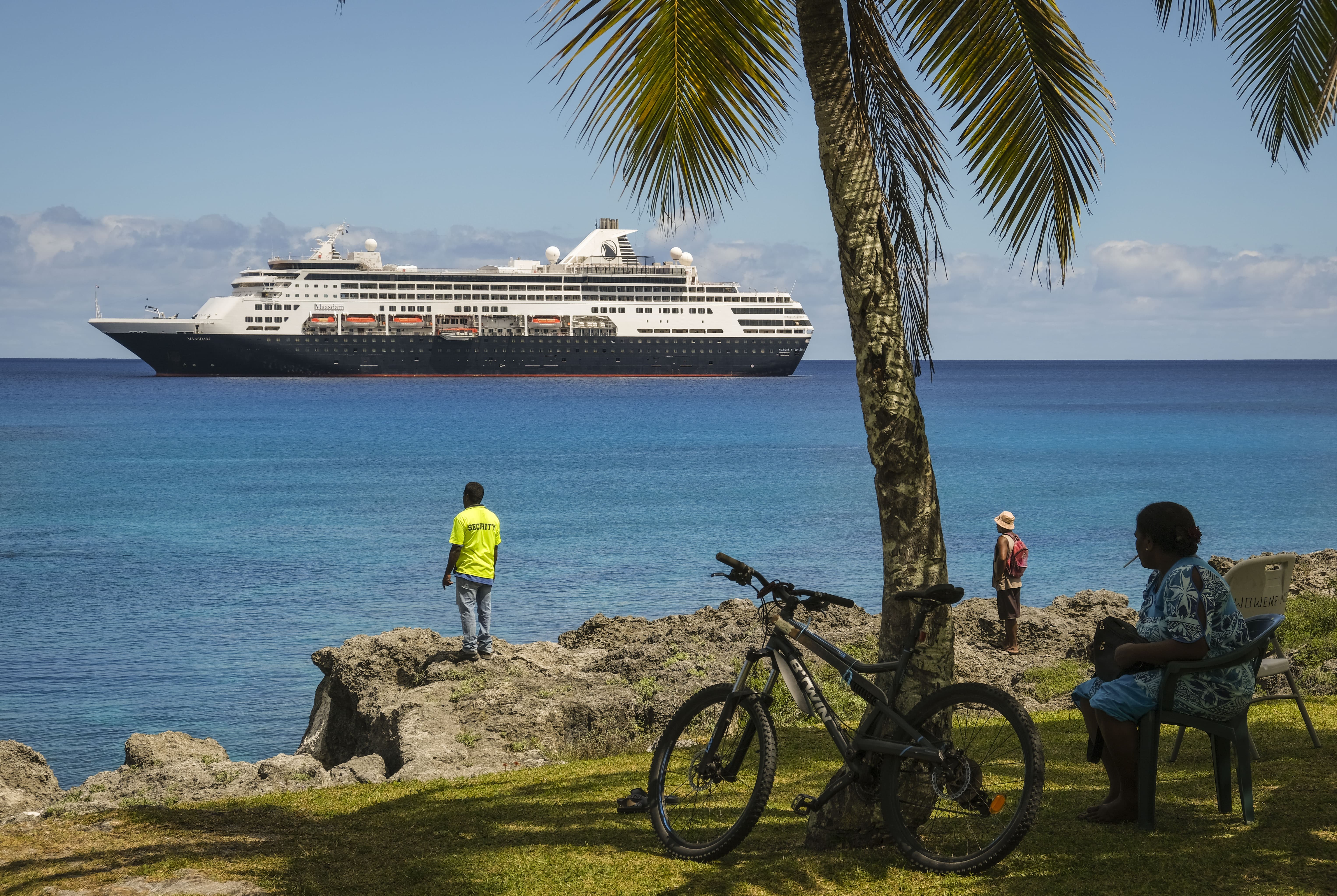
The Maasdam, at anchor off Tadine, New Caledonia.

